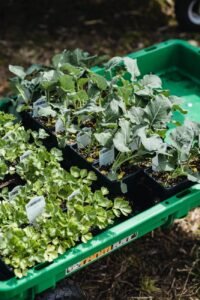Pruning is an essential gardening technique that involves the selective removal of parts of a plant, such as branches, buds, or roots. It is a skill that requires knowledge, precision, and a keen eye for detail. Pruning not only helps to shape and maintain the aesthetic appeal of plants, but it also promotes their overall health and vitality.
Why Pruning is Important
Pruning serves several important purposes in plant care. Firstly, it helps to control the size and shape of a plant, ensuring that it fits well within its designated space. By removing unwanted or excessive growth, pruning helps to maintain a neat and well-maintained appearance.
Secondly, pruning plays a crucial role in promoting the health and longevity of plants. By removing dead, damaged, or diseased branches, pruning helps to prevent the spread of pests and diseases. It also helps to improve air circulation and sunlight penetration, which are essential for the overall well-being of plants.
Furthermore, pruning encourages the growth of new shoots and branches. By selectively removing certain parts of a plant, it stimulates the development of new growth, resulting in a fuller and more vigorous plant. Pruning also helps to shape plants, creating a more aesthetically pleasing form that enhances the overall landscape.
When to Prune
The timing of pruning depends on the type of plant and its specific needs. However, there are some general guidelines to follow. It is best to prune deciduous trees and shrubs during their dormant season, typically in late winter or early spring. Pruning during this time allows the plant to heal before the onset of new growth in the spring.
Evergreen trees and shrubs, on the other hand, can be pruned throughout the year, although it is generally recommended to avoid pruning during extreme weather conditions. Flowering plants should be pruned after they have finished blooming to avoid removing potential flower buds.
Pruning Techniques
There are several pruning techniques that gardeners can employ, depending on the desired outcome and the type of plant being pruned. The most common techniques include:
- Thinning: This involves the selective removal of branches to improve air circulation and reduce the overall density of the plant.
- Heading back: This technique involves cutting back the tips of branches to promote new growth and maintain the desired shape of the plant.
- Pinching: Pinching refers to the removal of the tips of young shoots to encourage branching and create a bushier plant.
- Deadheading: Deadheading involves the removal of spent flowers to promote continuous blooming and prevent the plant from diverting energy into seed production.
When pruning, it is important to use clean and sharp tools to make precise cuts. This helps to minimize damage to the plant and reduce the risk of infection. It is also advisable to prune gradually, removing no more than one-third of the plant’s growth at a time.
Conclusion
Pruning is a valuable skill that every gardener should master. By understanding the importance of pruning and employing the right techniques, you can shape and maintain healthy plants that not only enhance the beauty of your garden but also thrive in their environment. So grab your pruning shears and get ready to unleash the transformative power of this artful practice.















